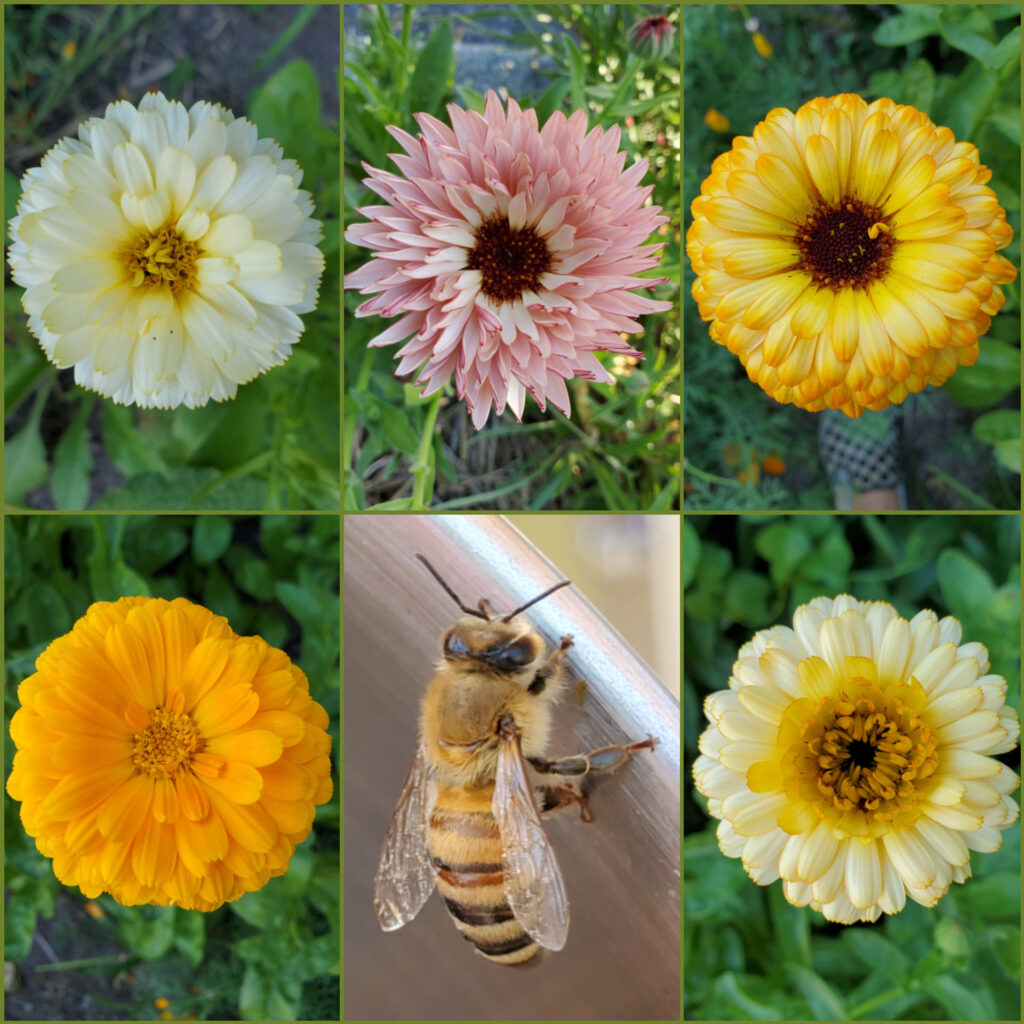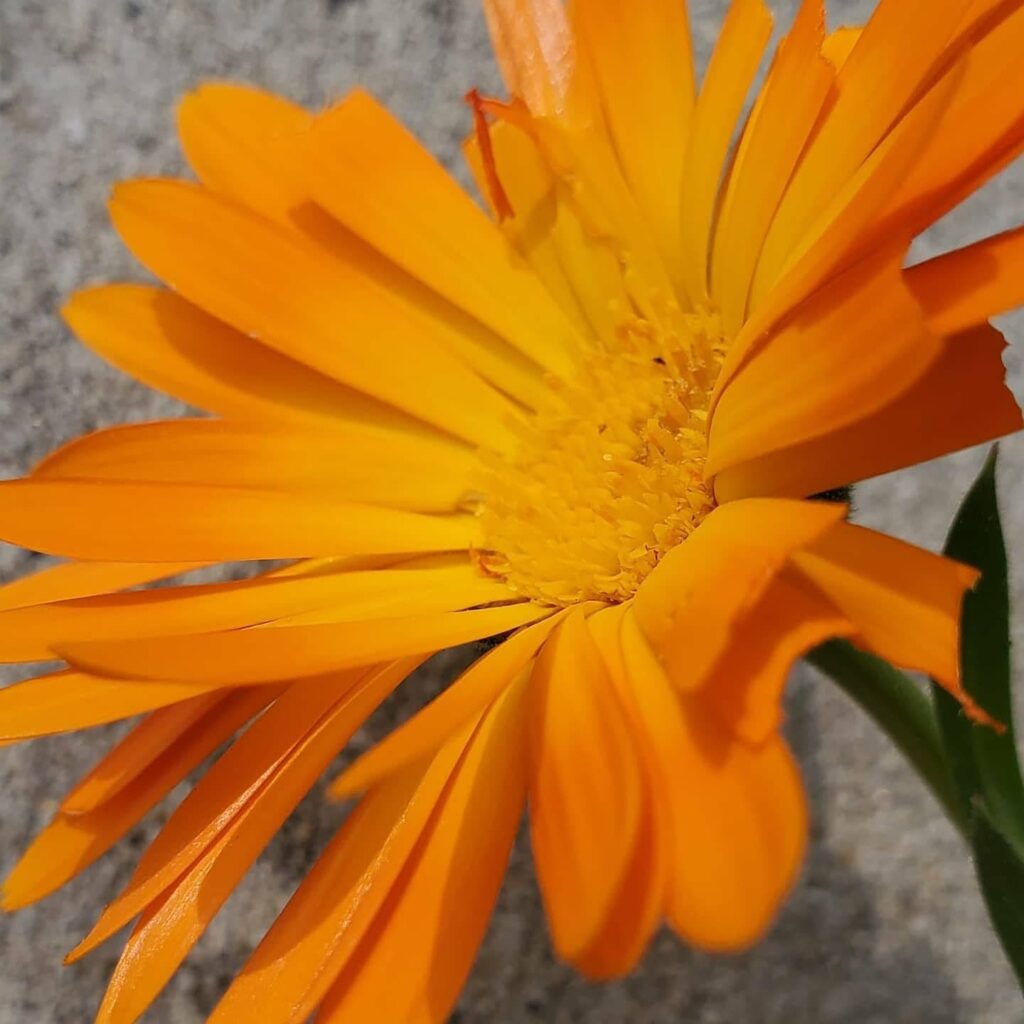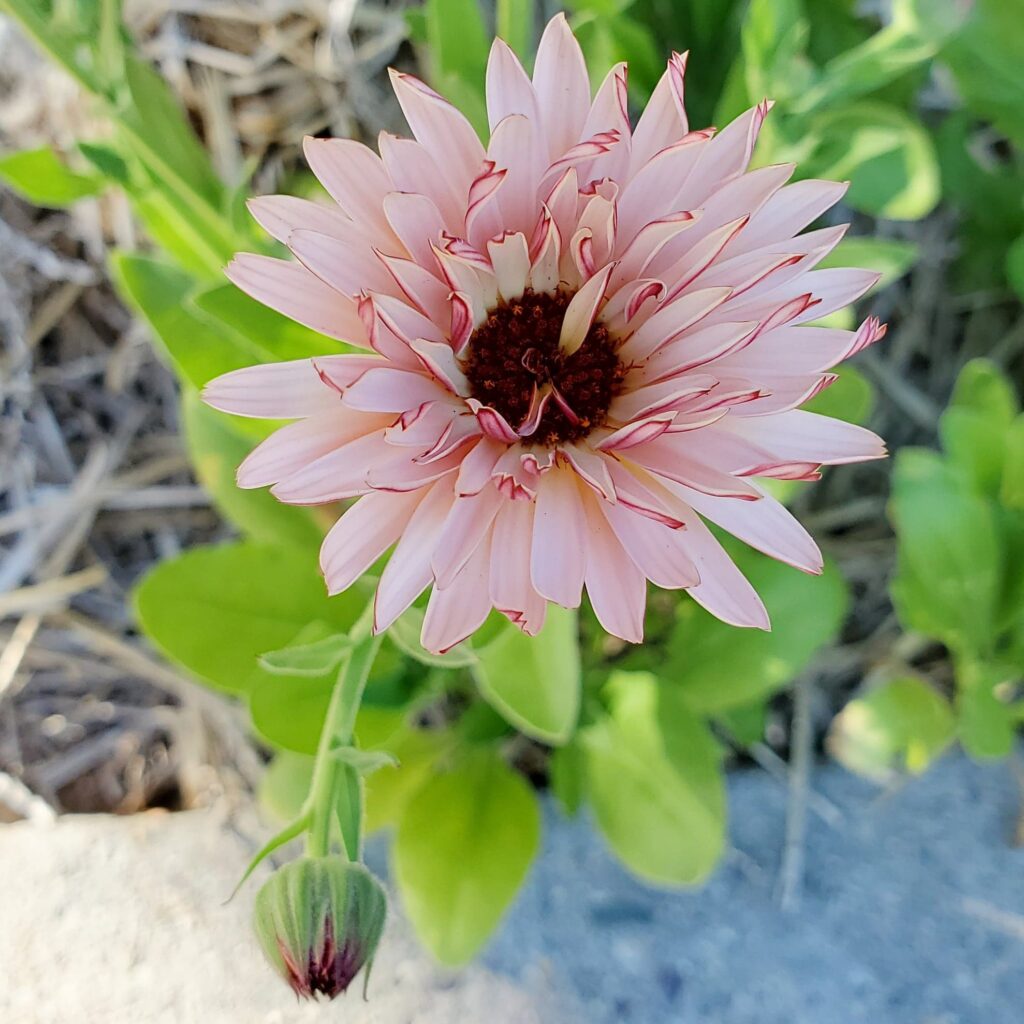Calendula Magic

I find special magic in a lot of plants, but the magic found in calendula is extra. This is our second ‘Rainbow Plant of the Week’, it isn’t incredibly timely considering you can’t really go find any outside (if you live in Montana). But, what we’re offering, in our shop, are a very limited number of seed packets, from our yarden to yours.
The medicinal parts of calendula officinalis are the leaves and the flower. Typically you’ll see a bright orange or yellow version of this plant, if you look it up.

But check this pink beauty, she’ll turn heads.

This plants has numerous herbal actions that I’ll share whilst talking about how we use it in our family and some ways it might benefit you and yours.
Below is a video that covers most of what this post will, in case you prefer watching.
What do we use calendula for in this family?
Calendula is an anti-spasmodic, an anti-inflammatory, a diaphoretic, an astringent, a gentle aperient (stimulant to digestion), a cholagogue (promotes flow of bile from gallbladder), a vulnerary (assists the body in healing wounds) and emmenagogue (promotes menstruation). It has anti-fungal properties, so it could be effective in treating warts, especially using the juice of the flower or a tincture. Sounds a bit crazy, but you can actually juice a calendula flower.
You can make an infusion (tea) with the dry flower/petals. Calendula can be a beneficial aid to the body’s ability to heal fevers, ulcers, stomach cramps, colitis, recurrent vomiting and diarrhea. You can make this infusion yourself by harvesting the flowers from your garden. Let them dry on a screen, boil some water and infuse the flowers in a tea ball/bag. You can gargle this infusion if you have a sore throat or some funky biz going on in your mouth.
To make a gargle simply take a bit of the infusion you’ve created, add some salt and/or baking soda and gargle/swish around your mouth.

You can take the dry flowers/petals and make an oil that can be used on your body or in a salve. Be sure you use a cold-pressed oil when concocting. Calendula promotes collagens and new cell growth in your skin so use it on wounds, sores, scars, burns, sunburns, and irritated skin (vulnerary action). Even if you have a bruise or a sprain calendula’s repairing effects will help heal, so an external application can be an extra boost to an internal ailment. Calendula can be a great added treatment for a case of shingles.
Visit my friend Kate’s shop at Orchard Farms and pick up some quality salves and balms that use her calendula, grown right on her farm in Idaho. If you don’t care to delve into making these things yourself, you can buy them from an herbalist.
Please note that calendula is in the aster family, so if you’re allergic to other plants in the aster family there is a possibility you could also be allergic to calendula.
Grow some, even if just to admire it throughout your growing season, it’s so happy. You’ll find seeds in our shop (for a limited time).

